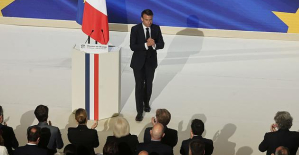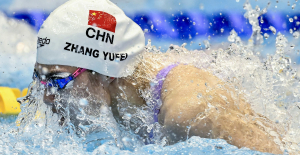"Rebuilt the Congo-by becoming a ”human zoo” in Oslo"
"In Oslo, on walk among the tourists in frogner park, and on the way up to the Vigelandsparkens final, the big monolith, you can just to the left to see a large portal in front of a small collection of huts. It is a rebuilt version of the ”Kongoby” that appeared in the Norwegian centenary of the constitution, 1914."
"Embedded in the vårgrönska rises now a tvåvåningars wooden building, saturated reddish-brown and with balustrades of birch. Behind the portal a dozen or so small huts. Two Norwegian and two belgian flags flutter amenable lojt. Available visitors, the kindergarten children, the tourists. All ramparts we around ourselves. It is a bit like an abandoned function room."
"Then, the same year as world war ii erupted and most of the southern hemisphere was colonized by the north, was shown people from Senegal, as many as 80 people, up in the form of a ”human zoo”. Before the celebration had been held to be a village made out - something that was not, as the maintainer realized the suspect in place, the voting citizens of exhibits. Where was the frontier for objektifieringen. Instead was hired british ”European Attraction Limited” to organized it all, led by underhållningsentreprenören Benno Singer."
"it is Clear that the exoticism of the exhibition created, and reinforced, the ideas of european superiority. The primitive village would show how far the norwegians have come in their civilisationsprocess."
"Now, a hundred years later, resting a pleasing ambiguity over what actually appears."
"The two artists behind the village, sudanske Mohamed Ali Fadlabi and Swedish-canadian Lars Cuzner has since they started work with the reconstruction and re-enactment of the Kongobyn want to have opposition and criticism. They began to copy the name, the whole project is called ”European Attraction Limited”."
"They want the opposition was not consulted in 1914, or since. For what provoked them most was the erasure of Kongolandsbyen that have occurred in the Norwegian historiography. The frogner park at the astounding 1.4 million visitors (since Norway had 2 million inhabitants). Still, it is not an event that scored a place in history."
"the Human zoon was not in any way unique for Norway, shows with minorities or what was perceived as exotic elements was quite common in an era that was obsessed with the differences, sorting, race."
"However, it is, as Rikki Andreassen pointed out at a conference that the project was in February 2013, hasty to see those who participated entirely as objects. They also had a private room for manoeuvre, and, for example, in Copenhagen were on strike a group of chinese people to bring out their fees."
"Kongobyn the year 2014 is a project with many parts, and the small village in Frognerparken, which shall be for the whole summer is just one part. Another part is that it is populated by volunteers, that the artwork should be a re-enactment, a re-created event. The village was quite uninhabited when I was there - overall, the voluntary approach is the total - but a woman interviewed by NRK in connection to the opening was concerned about the low standard of accommodation."
"overall, the voluntary approach also means that there is a mixed crowd that will potentially populate the Kongobyn. To Kongobyn could be all of us, regardless of color. This takes in part the holidays of the criticisms levelled against the project, especially from the afronorska and anti-racist groups: they have, quite rightly, took the view that it is a bad idea to reproduce racist practices to enhance the visibility of racism."
"The irony of the ”European Attraction Limited” is that there is a willingness to discuss the racist signs, the structures, the ”racism architecture” that created the society we have today, but the response has been fairly lojt. As Monica Ifejilika, Asta Busingye Lydersen, and Saynab Mohamud, said in Aftenposten in march, the debate had slipped awry as the Norwegian majority society has not understood that the art project is all about them. Nazneen Khan-Østrem wrote in the VG on 22 march, Kongolandsbyen, it is the one we live in, it is there already. All that is not light skinned feel the racism in their bodies, all of them feel on display, sorted, subject to a we and them-thinking. So what happens when the village most will be a hommage to the people was shown in 1914?"
"Kongolandsbyen at the end of may is idyllic. Happy people, possibly with a small concerned frown when the text of the 1914 years of the events is read, but then there is the most the camera up. A parkattraktion among many."
"Nonetheless, no one can escape the subtexten. The narrow björkstammarna, which constitute hyddornas walls and load-bearing function, has an unmistakable nordic character. This is not just about Norway - it would not occur to me to discuss the Norwegian self-image - but on a general scandinavian godhetsnorm, with a beautified history."
"Of colonialism in 1914 was lively and provided the already richer world with cheap raw materials, is the freedom of the world 2014 still economically unequal. The african inhabitants was seen as substandard, is now as economic refugees without the right to life chances in Europe. Images, both then and now, is based on a european limited self-image."
"the Contrast between the Kongolandsbyen and the vigeland park is big - the one temporary, fleeting, the other is monumental. Gustav Vigeland sculptures tell in the idealization of a realistic form of family, desire, love, and conflicts. We, who see, can possibly recognize us, even to identify with the different ages, with the memories of the childhood faces."
"We are seeing a form of representations of ourselves. When the gaze rather than go to the Kongolandsbyen, it gets stuck in the duality of now and then, while looking for more of the same: the identification and representation. Of course I can understand the historical fact, the form of development that led to the Kongolandsbyen 1914, and what led to it will be very different 100 years later. Then got a group of people representing a continent, which many perceived as both unknown and inferior."
"Now the group gets to represent themselves, and possibly us all. In this way, it is a re-enactment, which does not mean criticism without reconciliation, a catharsis where man meets man. The time machine is both broken and in full function, at the same time."
"Lars Cuzner and Mohamed Ali Fadlabi"

 Hamas-Israel war: US begins construction of pier in Gaza
Hamas-Israel war: US begins construction of pier in Gaza Israel prepares to attack Rafah
Israel prepares to attack Rafah Indifference in European capitals, after Emmanuel Macron's speech at the Sorbonne
Indifference in European capitals, after Emmanuel Macron's speech at the Sorbonne Spain: what is Manos Limpias, the pseudo-union which denounced the wife of Pedro Sánchez?
Spain: what is Manos Limpias, the pseudo-union which denounced the wife of Pedro Sánchez? Spain is the country in the European Union with the most overqualified workers for their jobs
Spain is the country in the European Union with the most overqualified workers for their jobs Parvovirus alert, the “fifth disease” of children which has already caused the death of five babies in 2024
Parvovirus alert, the “fifth disease” of children which has already caused the death of five babies in 2024 Colorectal cancer: what to watch out for in those under 50
Colorectal cancer: what to watch out for in those under 50 H5N1 virus: traces detected in pasteurized milk in the United States
H5N1 virus: traces detected in pasteurized milk in the United States Private clinics announce a strike with “total suspension” of their activities, including emergencies, from June 3 to 5
Private clinics announce a strike with “total suspension” of their activities, including emergencies, from June 3 to 5 The Lagardère group wants to accentuate “synergies” with Vivendi, its new owner
The Lagardère group wants to accentuate “synergies” with Vivendi, its new owner The iconic tennis video game “Top Spin” returns after 13 years of absence
The iconic tennis video game “Top Spin” returns after 13 years of absence Three Stellantis automobile factories shut down due to supplier strike
Three Stellantis automobile factories shut down due to supplier strike A pre-Roman necropolis discovered in Italy during archaeological excavations
A pre-Roman necropolis discovered in Italy during archaeological excavations Searches in Guadeloupe for an investigation into the memorial dedicated to the history of slavery
Searches in Guadeloupe for an investigation into the memorial dedicated to the history of slavery Aya Nakamura in Olympic form a few hours before the Flames ceremony
Aya Nakamura in Olympic form a few hours before the Flames ceremony Psychiatrist Raphaël Gaillard elected to the French Academy
Psychiatrist Raphaël Gaillard elected to the French Academy Skoda Kodiaq 2024: a 'beast' plug-in hybrid SUV
Skoda Kodiaq 2024: a 'beast' plug-in hybrid SUV Tesla launches a new Model Y with 600 km of autonomy at a "more accessible price"
Tesla launches a new Model Y with 600 km of autonomy at a "more accessible price" The 10 best-selling cars in March 2024 in Spain: sales fall due to Easter
The 10 best-selling cars in March 2024 in Spain: sales fall due to Easter A private jet company buys more than 100 flying cars
A private jet company buys more than 100 flying cars This is how housing prices have changed in Spain in the last decade
This is how housing prices have changed in Spain in the last decade The home mortgage firm drops 10% in January and interest soars to 3.46%
The home mortgage firm drops 10% in January and interest soars to 3.46% The jewel of the Rocío de Nagüeles urbanization: a dream villa in Marbella
The jewel of the Rocío de Nagüeles urbanization: a dream villa in Marbella Rental prices grow by 7.3% in February: where does it go up and where does it go down?
Rental prices grow by 7.3% in February: where does it go up and where does it go down? “Deadly Europe”, “economic decline”, immigration… What to remember from Emmanuel Macron’s speech at the Sorbonne
“Deadly Europe”, “economic decline”, immigration… What to remember from Emmanuel Macron’s speech at the Sorbonne Sale of Biogaran: The Republicans write to Emmanuel Macron
Sale of Biogaran: The Republicans write to Emmanuel Macron Europeans: “All those who claim that we don’t need Europe are liars”, criticizes Bayrou
Europeans: “All those who claim that we don’t need Europe are liars”, criticizes Bayrou With the promise of a “real burst of authority”, Gabriel Attal provokes the ire of the opposition
With the promise of a “real burst of authority”, Gabriel Attal provokes the ire of the opposition These French cities that will boycott the World Cup in Qatar
These French cities that will boycott the World Cup in Qatar Judo: Blandine Pont European vice-champion
Judo: Blandine Pont European vice-champion Swimming: World Anti-Doping Agency appoints independent prosecutor in Chinese doping case
Swimming: World Anti-Doping Agency appoints independent prosecutor in Chinese doping case Water polo: everything you need to know about this sport
Water polo: everything you need to know about this sport Judo: Cédric Revol on the 3rd step of the European podium
Judo: Cédric Revol on the 3rd step of the European podium


















